The Seasonal Travels of Tottori
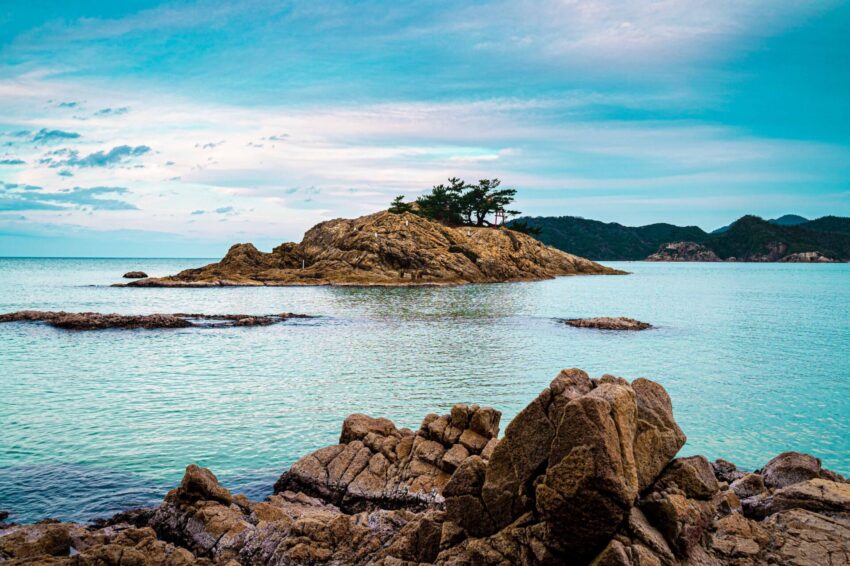
Top photo: Toby Sakata on Unsplash
Home to about 10 percent of Japan’s population, Tokyo is bursting with almost any form of entertainment one can imagine. From the electronic wonderland of Akihabara, to the fashions of Harajuku and the nightlife of Roppongi, vacationers can spend a week in Tokyo and not see even half that the city has to offer.
But week-long vacations are a rare commodity for the average Japanese worker. Shorter, one or two day trips, are much more common. And who wants to spend their weekend off dealing with the crowds and craziness of the world’s biggest megacity?
To get away and truly relax, why not take things to the other extreme and visit Japan’s least populated prefecture, Tottori? With a population of about half a million (not even 0.5%), Tottori is an off-the-radar destination that has a lot to offer visitors all year around.
Spring
Spring in Japan can only mean cherry blossoms! Tottori is no exception. Sakura trees grow all over the prefecture and there are many viewing spots, but Kyusho Park in Tottori City with the remains of Tottori Castle is the most popular. Experience the ohanami from mid to late March until early April.
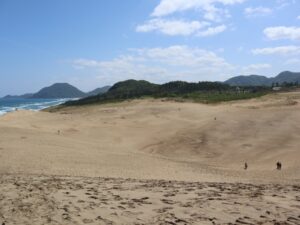
Photo by soraosraさん
Don’t forget to check out the Tottori Sand Museum for a unique art experience. New exhibits open in April and are on show until January of the following year. The museum then closes for three months to allow artists from all over the world to create their new works.
Recent exhibits are part of the ‘Travel Around the World in Sand’ series; themes include India, South America, and Scandinavia. (2020-2021’s theme was Czechia and Slovakia). The museum really is a delight for both art and sand castle lovers alike! And if you really want some sand, don’t miss the famous Tottori Sand Dunes, one of several Japanese “deserts”.
Summer
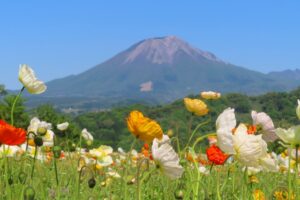
Photo by ぴーうささん
If spring is for cherry blossoms, summer is for festivals! Tottori prefecture is home to some unique festivals and summer events. The first weekend in June kicks off the opening of climbing season on Houki’s Fuji, aka Mt Daisen, with a parade of almost 2,000 torchbearers. At 1,729 meters Daisen is the highest peak in the Chugoku region. Home to beautiful trails, Daisen attracts serious hikers as well as more casual forest-bathers. Don’t miss Daisen-ji Temple, completed in 718, parts of which are designated National Treasures of Japan!
The nearby Masumizu Highlands are the sight of Ji-Beerfest Daisen, a gathering of Japanese musicians and microbreweries from all around the country. There is free transportation not only from the station, but also between the venue and the campsite, which is also free for all festival goers. The festival is held over a weekend in early to mid-June.
The name of the Gaina festival in Yogano comes from the local dialect word meaning ‘big’, in reference to the towering rows of lanterns carried in the parade. There is also a Taiko performance for Japanese drum lovers and the two-day festival ends with a BIG fireworks display. Around 6,000 fireworks are set of during the festivals climax! The Yagano Gaina festival is held in late July or early August.
During Obon, the streets of Tottori fill with spectators for the world’s largest umbrella dance! The Shan-shan Festival’s Bon odori, in reference to the onomatopoeia for the sound of a bell ringing, involve large paper umbrellas adorned with small bells that shake and jingle during the dancing. About 4,000 people join the dance every year, in mid-August.
Autumn
Autumn’s claim to fame is, of course, the changing leaves! Thanks to Daisen, Tottori can claim some of the most beautiful viewing spots for fall colors in Western Japan. The leaves start changing color in early October, but the peak season is mid-October to early November.
But Daisen is not the only sightseeing destination for fall visitors! Senjodaki Waterfall, in Mitaki Gorge, is surrounded by forest. There is even a Japanese style red suspension bridge above the valley making the whole area a scenic fall foliage spot.

Photo by 風間絆名さん
Utsubuki Park is also a great place (all year) to get out and enjoy nature. With cherry blossoms (spring), azaleas (summer), and camellias (winter), this park is a great place to get out and walk in every season. November is the start of crab season. And crab in Tottori is big deal.
Tottori people consume more crab than people from any other prefecture. They rank number one with the Ministry of Agriculture, Forestry and Fisheries, bringing in over 7,000 tons of all kinds of crab; almost double than of Hokkaido, in second place. Tottori has even created its own luxury brand of Matsuba crab, Itsukiboshi. (An Itsukiboshi crab has set the world record for the most expensive crab sold at auction, selling for 5 million yen!)
Winter
If the Sand Museum was any clue, Tottori can boast one of the finest coastal sand dunes in the country. They also host the largest illumination even in the San-in region, illuminating the area around the dunes from early December to Christmas. (Tottori’s Hanakairo Flower Park also holds an illumination event from early November until late January.) Come for the illuminations, but stay for the camel riding, paragliding, cycling, and sandboarding!

Photo by 自然さん
Last but not least, skiing! With over 11 kms of slopes across 7 ski resorts, there is a ski resort for everyone. It’s no Hokkaido, but from a day out on the slopes to a night enjoying the illuminations and stargazing at the dunes, Tottori offers a truly unique vacation experience. And if you want a little danger in that experience, check out Japan’s most dangerous National Treasure, Nageiredo Temple, on the cliffs of Mount Mitoku!
Whenever you decide to visit, Tottori is a great place to make your next vacation destination!
Photo Credits:
Top photo: Toby Sakata on Unsplash
Additional Photos (all from PhotoAC)
Spring – soraosraさん
Summer – ぴーうささん
Fall – 風間絆名さん
Winter – 自然さん
All other content (text) created by the original author and © 2022 MUSUBI by Borderlink
RELATED
-
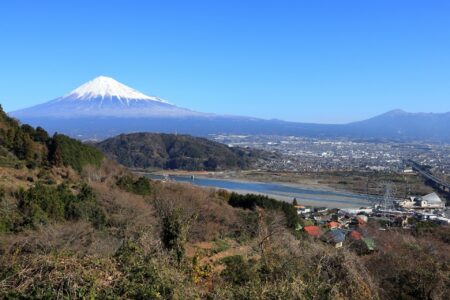
Climb Every Mountain
Top Photo: コメットさん on PhotoAC I am addicted to mountain climbing. Japan is covered in mountains and hills, and … -
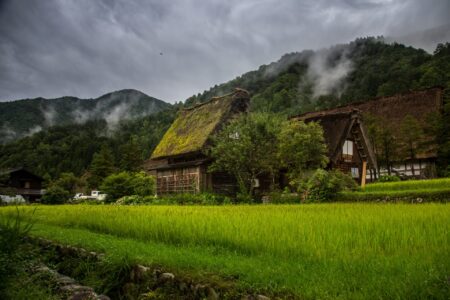
For Vacations, Smaller (Not Less) Is More
Top photo: Photo by Luke Paris on Unsplash Vacation travel in Japan is quite different from that in the US. O… -

Nasu, Tochigi: A Great Getaway
Top Image: ___ii8___ on Pixabay During my stay in Japan, there came a point when I felt a bit exhausted by the…
PEOPLE

The MUSUBI Staff
Collaborative works put together by our many talented writers and editors!


